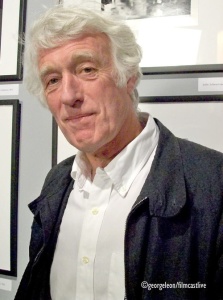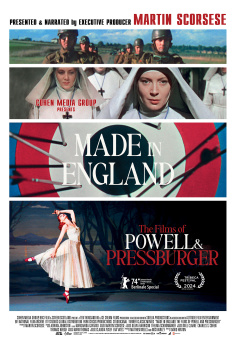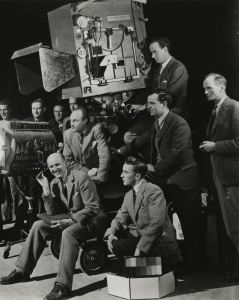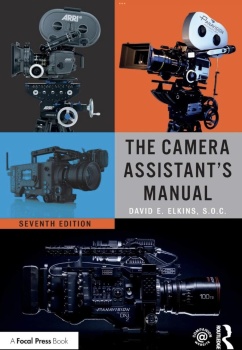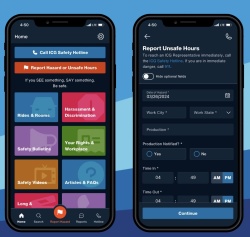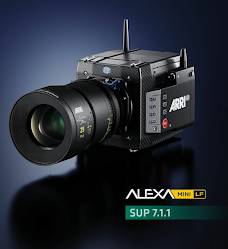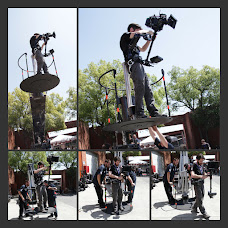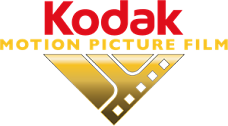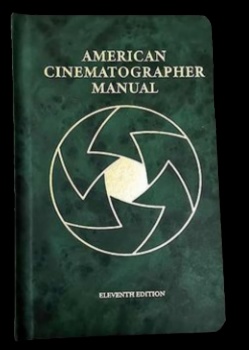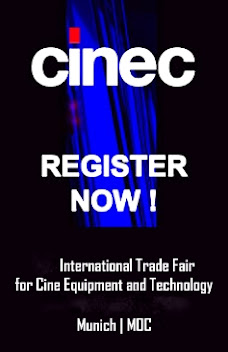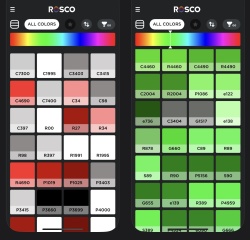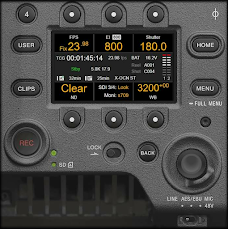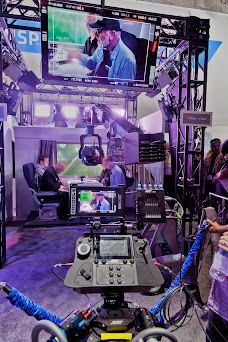 Emmy®-winner Robbie Greenberg, ASC shared his experiences at the Los Angeles Film Festival (LAFF), which showcases new American and international cinema. Greenberg offered his insights into the artistry and technology of his craft as he showed and discusses his work from a career that spans over 30 years. The festival, now in its 15th year, ran June 18-28 at venues in and around Westwood Village.
Emmy®-winner Robbie Greenberg, ASC shared his experiences at the Los Angeles Film Festival (LAFF), which showcases new American and international cinema. Greenberg offered his insights into the artistry and technology of his craft as he showed and discusses his work from a career that spans over 30 years. The festival, now in its 15th year, ran June 18-28 at venues in and around Westwood Village.  Michael Houser, Kodak's Account Manger of Entertainment Imaging, moderated the presentation and Q&A. Houser serves as Kodak's liaison for the major studios and independent filmmakers acquiring film stock. Houser relationship with Hollywood top cinematographers and his awareness of their production needs made him the right choice for the conversation with Robbie Greenberg.
Michael Houser, Kodak's Account Manger of Entertainment Imaging, moderated the presentation and Q&A. Houser serves as Kodak's liaison for the major studios and independent filmmakers acquiring film stock. Houser relationship with Hollywood top cinematographers and his awareness of their production needs made him the right choice for the conversation with Robbie Greenberg.Robbie Greenberg has won two consecutive Emmy® Awards for his work on Introducing Dorothy Dandridge and Winchell, as well as three additional nominations for Warm Springs, Iron Jawed Angels and James Dean. His work on four of these telefilms also earned him American Society of Cinematographers (ASC) Awards. Greenberg's extensive credits include The Milagro Beanfield War, Free Willy, Fools Rush In, Save the Last Dance, and Wild Hogs.
After a brief introduction by Houser, Greenberg was received with a thundering applause by the audience. The attending audience consisted of a mixed bag of festival goers, film school students, camera department professionals and first time filmmakers.
 The afternoon program consisted of a 10 minutes clip screening of some of his award winning films followed by a candid conversation with Houser and a Q & A with the audience. A note worth to mention was that the screening was projected on film stock. The quality condition of the three prints screened allowed the audience to evaluate the sharpness, color rendering and forgiving latitude of the Kodak negatives used by Greenberg in these three different genres.
The afternoon program consisted of a 10 minutes clip screening of some of his award winning films followed by a candid conversation with Houser and a Q & A with the audience. A note worth to mention was that the screening was projected on film stock. The quality condition of the three prints screened allowed the audience to evaluate the sharpness, color rendering and forgiving latitude of the Kodak negatives used by Greenberg in these three different genres.The first clip presented was The Milagro Beanfield War, a compelling pastoral social rights issue drama directed by Robert Redford. The mesmerizing screening focused into the almost constant magic hour landscape photography captured by Greenberg, who highlighted the storyline with a surreal multicolor glow and a naturalistic mountain ambient light.
The audience was stunned by the emotive beauty of the framing, composition and photography of the film and made many questions ranging from the relationship between cinematographer and director, camera placement and actor blocking, choice of film stock, lenses and aspect ratio, production design as complementary to cinematography and, of course, Greenberg's working relationship with Robert Redford.
The second clip was Winchell, a made for TV biopic spanning several decades. In order to emphasize the different periods of Winchell's saga, Greenberg lit the many scenes with the proper elements of the different eras. As an example, to photograph Winchell's youth scenes in new York's lower East Side (at Paramount lot), he re-styled a textured lighting plot with deep shadows reminiscent of The Godfather's youth scenes. "The intent was to be able to span the many decades of Winchell's life and to keep each period unique". Greenberg also recreated and mixed stock footage with the actors, offering seamless black and white newsreel style photography.
At other moments, when Winchell is at the top of his game as the hottest journalist in town adulated by politicians and the stars of the moment, Greenberg uses a very sharp and glossy photography to show the decadence of the era.
The last clip presented was the feature crime story Even Money where the narrative describes the lives of three otherwise unconnected people and their destructive addiction to gambling. Here, Greenberg lit each people world's completely different to the other. Each character has it own "signature" lighting trough the storyline that is complementary to their personality, shortcomings and destructive behavior.
Other events organized by the festival also include Kodak Speed Dating, which offers session participants the opportunity to talk one on one with industry professionals, and Kodak Fast Track, an intensive film financing market that connects filmmakers seeking funding and financiers, production companies and other high-level industry professionals who can provide assistance.
 Previous Fast Track projects include Amreeka, Frozen River, Kabluey, Four Sheets to the Wind, Ira and Abby and After Innocence. "We're thrilled that the innovative filmmakers who are exhibiting their work here at LAFF continue to create their vision on film," says Peter Boyce, Kodak's general manager of North and South America. "Our goal is to listen, and continue providing the highest-quality tools that filmmakers want. We are committed to bringing the best products and services to the creative community, so they don't have to make compromises at any stage of the filmmaking process." Kodak's Entertainment Imaging Division is the world-class leader in providing film, digital and hybrid motion imaging products, services and technology for the entertainment industry. For more information, visit www.kodak.com/go/motion.
Previous Fast Track projects include Amreeka, Frozen River, Kabluey, Four Sheets to the Wind, Ira and Abby and After Innocence. "We're thrilled that the innovative filmmakers who are exhibiting their work here at LAFF continue to create their vision on film," says Peter Boyce, Kodak's general manager of North and South America. "Our goal is to listen, and continue providing the highest-quality tools that filmmakers want. We are committed to bringing the best products and services to the creative community, so they don't have to make compromises at any stage of the filmmaking process." Kodak's Entertainment Imaging Division is the world-class leader in providing film, digital and hybrid motion imaging products, services and technology for the entertainment industry. For more information, visit www.kodak.com/go/motion.








